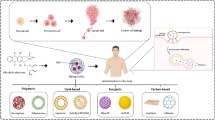Summary
KW-2149, a new mitomycin C (MMC) derivative, inhibited the growth of murine P388 leukemia in vitro at 20-fold lower concentrations than those of MMC. KW-2149 was also effective in inhibiting the growth of MMC-resistant P388 (P388/MMC) cells. To elucidate these characteristics of KW-2149, its uptake and efflux were compared with those of MMC in MMC-sensitive and-resistant P388 cells. Both MMC and KW-2149 accumulated rapidly in P388 cells after incubation at the concentration of 0.47 and 0.024 μm, respectively, which were the IC50 values at 1-h exposure. Although this concentration of KW-2149 was 20 times lower than that of MMC, its intracellular concentration was little more than that of MMC, suggesting that KW-2149 accumulated in the cells quite efficiently. The accumulated KW-2149 in the cells after 1-h treatment remained for as long as 24 h after the incubation of the cells in drug-free medium, suggesting that most of the intracellular KW-2149 or MMC was bound to cellular components. The ratios of resistance of P388/MMC cells to MMC and KW-2149 were 34 and 8.8, respectively, at 1-h exposure, suggesting that P388/MMC cells were partially resistant to KW-2149 in vitro. P388/MMC cells also showed partial resistance to cisplatin, Adriamycin,m-AMSA, and etoposide. The accumulation of MMC in P388/MMC cells was lower than that in P388 cells, although the size of the former cells was almost equal to that of the latter. As a result, the amount of DNA-bound MMC was lower in P388/MMC cells than in P388 cells, suggesting its involvement in the mechanisms of MMC resistance in P388/MMC cells.
Similar content being viewed by others
Abbreviations
- m-AMSA:
-
4′-(9-acridinylamino)methanesulfon-m-aniside
- HPLC:
-
high-performance liquid chromatography
- IC50 :
-
concentration required for 50% growth inhibition
- MMC:
-
mitomycin C
- PFM:
-
porfiromycin
References
Arai H, Kasai M (1991) Synthesis of [C6−CH3−14C] and [C6−CH3−3H3]mitomycin C. J Labelled Comp Radiopharmacol 29: 903–908
Dorr RT, Liddil JD, Trent JM, Dalton WS (1987) Mitomycin C resistant L1210 leukemia cells: association with pleiotropic drug resistance. Biochem Pharmacol 36: 3115–3120
Dulhanty AM, Li M, Whitmore GF (1989) Isolation of Chinese hamster ovary cell mutants deficient in excision repair and mitomycin C bioactivation. Cancer Res 49: 117–122
Fracasso PM, Sartorelli AC (1986) Cytotoxicity and DNA lesions produced by mitomycin C and porfiromycin in hypoxic and aerobic EMT6 and Chinese hamster ovary cells. Cancer Res 46: 3939–3944
Inaba M, Fujikura R, Sakurai Y (1979) Comparative study on in vivo development of resistance to various classes of antitumor agents in P388 leukemia. Jpn J Cancer Res 70: 607–613
Kasai M, Arai H, Kanda Y (1991) An unusual replacement of a methylene moiety by a phenylseleno group. Synthesis of mitomycin C labelled at C-6 by13CH3 and C2H3. J Chem Soc Chem Commun: 600–601
Kono M, Saitoh Y, Kasai M, Sato A, Shirahata K, Morimoto M, Ashizawa T (1989) Synthesis and antitumor activity of a novel water soluble mitomycin analog, 7-N-[2-[[2-(γ-l-glutamylamino)ethyl]dithio]ethyl]mitomycin C. Chem Pharm Bull (Tokyo) 37: 1128–1130
Kubota T, Inada T, Inoue S, Kuzuoka M, Arisawa Y, Suto A, Kodaira S, Ishibiki K, Abe O (1989) Antitumor activity of 7-N-(2-((2-(γ-l-glutamylamino)ethyl)dithio)ethyl)mitomycin C (KW-2149) against human tumor xenografts serially transplanted into nude mice. Jpn J Clin Oncol 19: 216–221
Maniatis T, Fritsch EF, Sambrook J (1982) Molecular cloning. A laboratory manual. Cold Spring Harbor Laboratory, Cold Spring Harbor, New York, pp 280–281
Marshall RS, Paterson MC, Rauth AM (1991) Studies on the mechanism of resistance to mitomycin C and porfiromycin in a human cell strain derived from a cancer-prone individual. Biochem Pharmacol 41: 1351–1360
Morimoto M, Ashizawa T, Ohno H, Azuma M, Kobayashi E, Okabe M, Gomi K, Kono M, Saitoh Y, Kanda Y, Arai H, Sato A Kasai M, Tsuruo T (1991) Antitumor activity of 7-N-{{2-{[2-(γ-l-glutamylamino)ethyl]dithio}ethyl}}mitomycin C. Cancer Res 51: 110–115
Nishiyama M, Kim R, Jinushi K, Takagami S, Kirihara Y, Toge T (1989) Antitumor effect of KW-2149, a new mitomycin derivative, administered by different modalities. In Vivo 3: 375–380
Ohe Y, Nakagawa K, Fujiwara Y, Sasaki Y, Minato K, Bungo M, Niimi S, Horichi N, Fukuda M, Saijo N (1989) In vitro evaluation of the new anticancer agents KT6149, MX-2, SM5887, menogaril, and liblomycin using cisplatin- or Adriamycin-resistant human cancer cell lines. Cancer Res 49: 4098–4102
Pan S (1990) Porfiromycin disposition in oxygen-modulated P388 cells. Cancer Chemother Pharmacol 27: 187–193
Pan S, Johnson R, Gonzalez H, Thohan V (1989) Mechanism of transport and intracellular binding of porfiromycin in HCT 116 human colon carcinoma cells. Cancer Res 49: 5048–5053
Tomasz M, Hughes CS, Chowdary D, Keyes SR, Lipman R, Sartorelli AC, Rockwell S (1991) Isolation, identification, and assay of [3H]-porfiromycin adducts of EMT6 mouse mammary tumor cell DNA: effects of hypoxia and dicumarol on adduct patterns. Cancer Commun 3: 213–223
Tsuruo T, Sudo Y, Asami N, Inaba M, Morimoto M (1990) Antitumor activity of a derivative of mitomycin, 7-N-[[2-[[2-(γ-l-glutamylamino)ethyl]dithio]ethyl]]mitomycin C (KW-2149), against murine and human tumors and a mitomycin C-resistant tumor in vitro and in vivo. Cancer Chemother Pharmacol 27: 89–93
Wallner KE, Banda M, Li GC (1987) Hyperthermic enhancement of cell killing by mitomycin C in mitomycin C-resistant Chinese hamster ovary cells. Cancer Res 47: 1308–1312
Author information
Authors and Affiliations
Rights and permissions
About this article
Cite this article
Kobayashi, E., Okabe, M., Kono, M. et al. Comparison of uptake of mitomycin C and KW-2149 by murine P388 leukemia cells sensitive or resistant to mitomycin C. Cancer Chemother. Pharmacol. 32, 20–24 (1993). https://doi.org/10.1007/BF00685871
Received:
Accepted:
Issue Date:
DOI: https://doi.org/10.1007/BF00685871




